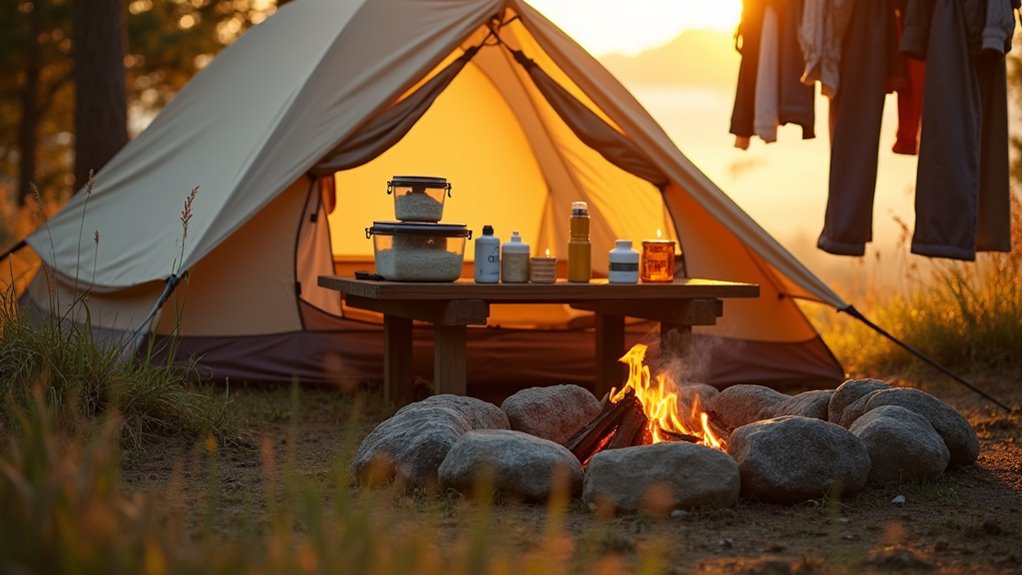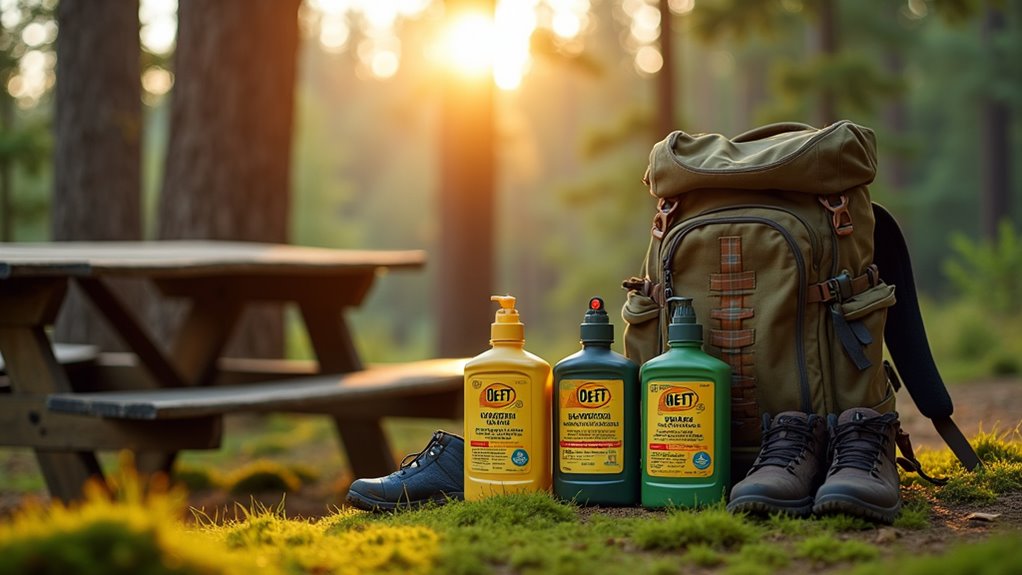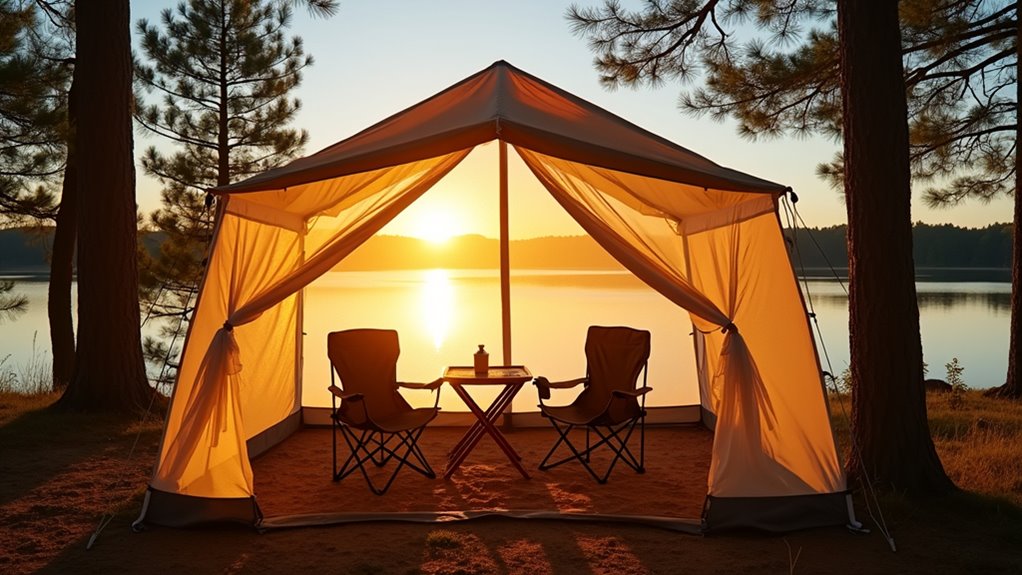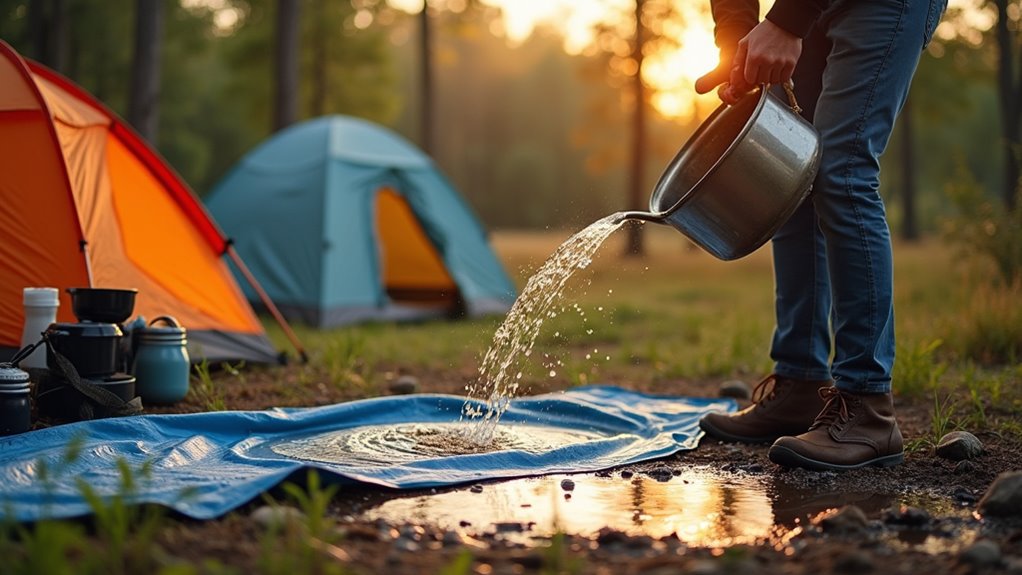Physical Address
304 North Cardinal St.
Dorchester Center, MA 02124
Physical Address
304 North Cardinal St.
Dorchester Center, MA 02124

Master these 12 essential camping strategies to outsmart pesky insects and enjoy bite-free nights under the stars.
Have you ever returned from a camping trip looking like you wrestled with a swarm of mosquitoes and lost? Nothing ruins the serenity of sleeping under stars quite like constant buzzing, itching welts, and the dreaded discovery of an attached tick. While you can’t eliminate every creepy crawler from your outdoor experience, you can substantially reduce your chances of becoming their next meal. The right preparation and smart camping strategies will transform your next wilderness adventure from a bug-bitten nightmare into the peaceful retreat you’re craving.

When you’re scouting for the perfect campsite, you’ll want to steer clear of areas where bugs love to congregate. Avoid setting up camp near stagnant water sources like ponds, marshes, or slow-moving streams where mosquitoes breed. Skip flower-filled meadows during peak blooming season, as they attract bees and other insects.
Choose elevated spots with good airflow instead. Bugs struggle in breezy conditions, so hilltops and ridges work well. Look for areas with sparse vegetation rather than dense brush where ticks and chiggers hide. Sandy or rocky ground beats thick grass every time.
Distance yourself from garbage areas, food storage locations, and heavily trafficked trails where insects gather. Scout your site during daylight hours to spot potential problem areas before you commit to spending the night there. Smart site selection is one of the most important backpacking mistakes to avoid when planning your outdoor adventures.
Since bugs struggle against strong winds, timing your camp setup becomes a strategic advantage in your battle against bites. You’ll want to arrive at your campsite during the windiest part of the day, typically late morning through mid-afternoon when thermal winds peak.
Wind speeds above 10 mph make it nearly impossible for mosquitoes, gnats, and flies to maintain stable flight patterns. They’ll seek shelter in dense vegetation or ground cover, giving you precious time to establish your base without constant harassment.
Use this window to pitch your tent, organize gear, and complete exposed tasks like gathering firewood. You’ll work more efficiently without swatting insects every few seconds.
Once evening arrives and winds calm, you’ll already be settled with bug protection measures in place. Planning your camping adventures around natural wind patterns is one of the smartest strategies for maintaining a pest-free outdoor experience.

DEET remains the gold standard for insect repellents because it’s been proven effective against mosquitoes, ticks, flies, and other biting insects for over 70 years. When you’re packing for your camping trip, choose DEET-based repellents with concentration levels that match your needs and expected exposure time.
Here’s what you need to know about DEET concentrations:
Pack multiple bottles so you can reapply as needed, especially after swimming or heavy sweating. For comprehensive protection, combine DEET with other bug prevention strategies to create multiple barriers against insects.
Although chemical repellents offer excellent protection, creating a physical barrier between your skin and insects provides an equally important layer of defense.
You’ll want to pack lightweight, long-sleeved shirts and pants for dawn and dusk when mosquitoes are most active. Choose loose-fitting clothes since tight fabric allows insects to bite through the material. Light-colored clothing works better than dark colors, which attract bugs and absorb heat.
Tuck your pants into socks and your shirt into pants to eliminate gaps where insects can sneak in. Consider treating your clothes with permethrin before your trip—this insecticide bonds to fabric and repels bugs for weeks, even through multiple washes.
Don’t forget a hat to protect your scalp and neck, prime targets for hungry mosquitoes. Long sleeves and pants are especially crucial for tick prevention since these arachnids often latch onto exposed skin as you brush against vegetation.

While protective clothing forms your first line of defense, screen shelters take your bug protection to the next level by creating an actual insect-free sanctuary at your campsite. These mesh enclosures let you enjoy meals, relax, and socialize without constantly swatting away mosquitoes and flies.
Choose from several effective options:
Position your shelter away from standing water where bugs breed. You’ll create a comfortable retreat where you can actually enjoy your outdoor meals and evening conversations without the constant buzz of insects. If you’re planning to explore mountainous regions, consider that the Andes mountains offer unique high-altitude camping experiences where insect pressure typically decreases with elevation.
Beyond creating physical barriers, you can transform your clothing and gear into active insect repellent by treating them with permethrin. This synthetic insecticide kills ticks, mosquitoes, and other bugs on contact while remaining safe for humans when properly applied.
You’ll find permethrin spray at outdoor retailers. Treat your pants, shirts, socks, and boots before your trip, allowing them to dry completely. The treatment lasts through multiple washes, making it cost-effective for frequent campers.
For maximum protection, combine treated clothing with topical repellents on exposed skin.
Don’t forget your gear—treat tents, sleeping bags, and backpacks too. The invisible barrier you’ve created will work 24/7, even when you’re sleeping. This proactive approach markedly reduces bug encounters without constant reapplication.
In areas with high mosquito populations or disease transmission risks, consider adding mosquito nets as an extra layer of protection around your sleeping area.

Since mosquitoes need stagnant water to breed, removing these sources from your campsite becomes one of your most effective defensive strategies. You’ll dramatically reduce the mosquito population around your tent by eliminating their breeding grounds.
Eliminate stagnant water sources around your campsite to dramatically cut down mosquito breeding and create a more comfortable outdoor experience.
Start by surveying your campsite for water collection points:
Don’t forget to check less obvious spots like folded tarps or equipment covers. Even tiny amounts of standing water can support mosquito larvae development within days.
Beyond mosquitoes, eliminating standing water also helps deter other camping vermin that are attracted to moisture sources around your campsite.
After addressing water sources around your campsite, your next line of defense involves strategic timing of when you venture outside your tent. Most biting insects are most active during dawn and dusk hours, so you’ll want to plan accordingly.
Schedule your hiking, fishing, or exploration activities during mid-morning through late afternoon when mosquitoes and other pests are less aggressive. If you must be outside during peak bug hours, wear long sleeves and pants, and apply insect repellent liberally.
Consider enjoying campfire activities or preparing meals during daylight hours rather than twilight. You can also retreat to your tent earlier in the evening and emerge later in the morning to avoid those critical feeding times when insects swarm.
If you’re planning water-based activities like fishing, consider whether renting or buying a boat makes more sense for your camping adventure, as being on the water can provide relief from shore-based insects.

While timing your activities helps reduce exposure to biting insects, creating the right campfire can serve as your most effective natural deterrent. Smoke naturally repels mosquitoes, flies, and other bugs that’d otherwise make your evening miserable.
Here’s how to build an effective bug-repelling campfire:
You’ll find this method works better than chemical sprays while creating that perfect camping atmosphere. Just as essential climbing gear protects mountaineers from harsh conditions, a well-maintained smoky fire serves as your primary defense against persistent insects throughout the night.
Even with a smoky campfire deterring most insects, you’ll need a solid barrier between yourself and the bugs that remain active throughout the night. Your tent becomes your fortress against mosquitoes, ticks, and other unwanted visitors seeking warmth and blood.
Check your tent’s integrity before setting up camp. Inspect the mesh for tears, holes, or loose seams that could serve as bug highways. Pack duct tape for emergency repairs – it’s lightweight and fixes most problems quickly.
Keep your tent zipped tight, even during brief exits. Bugs slip inside faster than you’d think.
Position your tent away from standing water where mosquitoes breed. If your tent lacks a full rainfly, consider adding one to create an extra protective layer against persistent insects.
Before committing to tent camping, evaluate what camping style works best for your comfort level and bug tolerance preferences.

Though commercial repellents work effectively, many campers prefer natural alternatives that don’t contain synthetic chemicals like DEET. You’ll find these options gentler on your skin while still providing decent protection against mosquitoes, ticks, and other biting insects.
Here are four proven natural repellents you should pack:
Remember to reapply natural repellents more frequently than synthetic versions since they typically don’t last as long. Whether you’re planning river rafting adventures or traditional camping trips, having effective natural repellents ensures you can enjoy outdoor activities without worrying about insect bites.
Since ticks can attach to your body without you feeling them, you’ll need to check yourself systematically several times each day during your camping trip.
Focus on warm, moist areas where ticks prefer to hide: behind your ears, along your hairline, under your arms, around your waist, behind your knees, and between your toes.
Check immediately after hiking through tall grass or wooded areas, then again before bed.
Use a mirror or ask your camping partner to examine hard-to-see spots on your back and scalp.
Run your hands over your entire body, feeling for small bumps that weren’t there before.
If you find an attached tick, remove it promptly with fine-tipped tweezers, grasping close to the skin and pulling straight up with steady pressure.
During winter ski trips, tick activity is generally reduced due to cold temperatures, but vigilance remains important in milder weather conditions.
You’ll appreciate these strategies even more knowing that mosquitoes cause over one million deaths worldwide annually through disease transmission. Don’t let bugs ruin your outdoor adventure – you’ve got the tools to fight back. Combine multiple tactics from DEET repellents to strategic campsite selection for maximum protection. Remember, it’s not just about comfort; it’s about safety. Stay vigilant with tick checks, maintain your barriers, and you’ll enjoy bug-free camping experiences that keep you coming back for more.